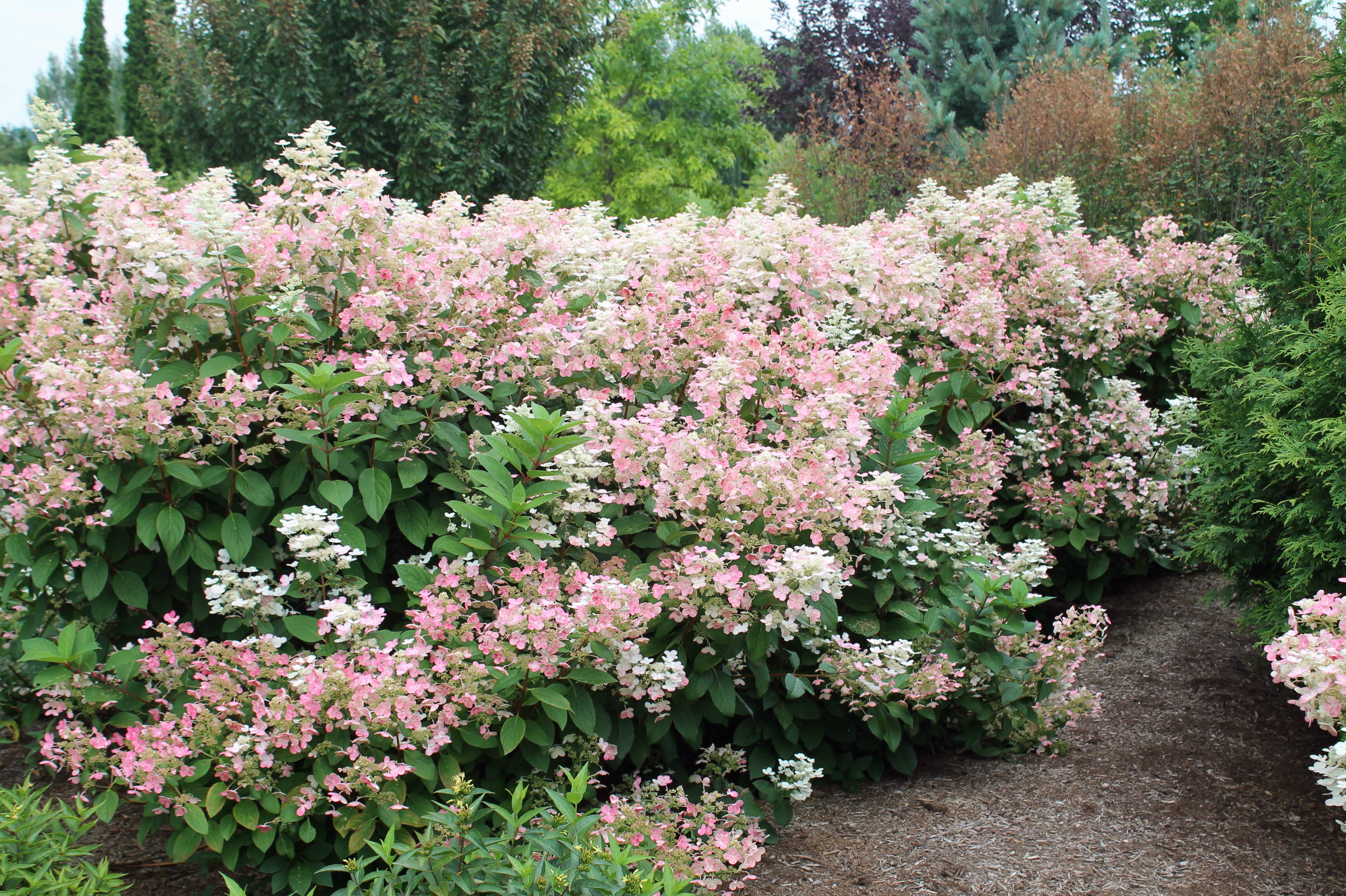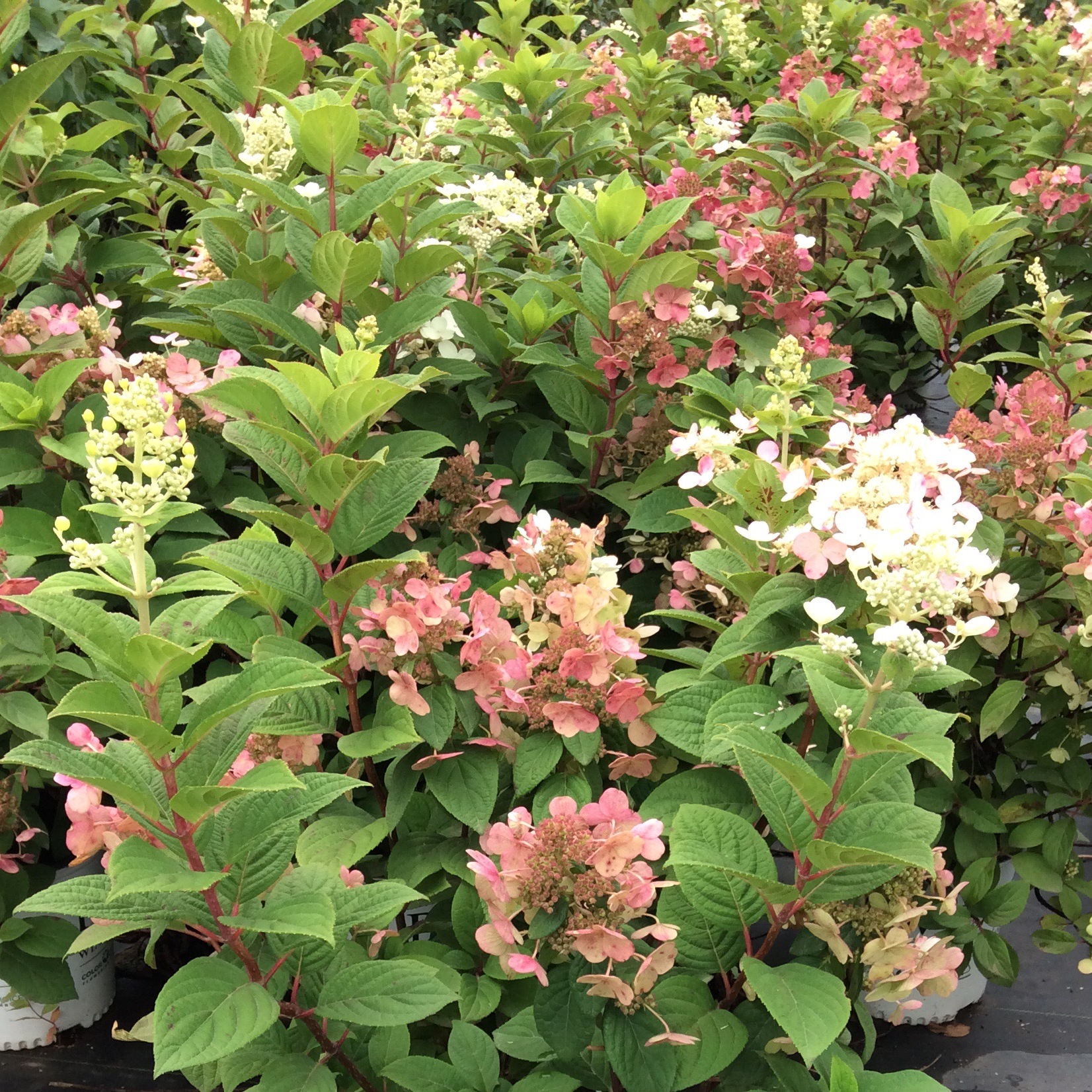

Panicle hydrangeas are not fussy about soil, as long as it is well-drained.

Panicle hydrangeas will survive in shady sites, but their flowering will be substantially diminished, stems may not be as strong, and flower color will be muddy instead of the rich, clear tones you see on our site. In zones 7,8, and 9, they should be planted where they will be shaded during the hottest part of the day, but not deprived of sun entirely: filtered light, or a few hours of morning sun, will give you the best results.
Hydrangea quickfire full#
In zones 3-6, they can easily take full sun (6+ hours of bright, direct sun). These are the most sun, heat, and drought tolerant of all hydrangeas, and we recommend at least some sun each day for the strongest stems and the most abundant flower set. Starting with a smaller variety, like Fire Light Tidbit or Little Lime, will make your life easier and result in a much more attractive plant. Trying to keep a large panicle hydrangea smaller through pruning will quickly become a headache, as its the volume of the root system that determines how much it will rebound after severe or frequent pruning. If you need a small hydrangea, we recommend that you select a dwarf variety instead of trying to manage the height of a full sized variety. There's a panicle hydrangea for every site and situation these days! Though they are traditionally quite large, reaching 8'+ at maturity, there are several dwarf varieties now that stay under 5' tall. Close to 90% of North America can grow them! Size They thrive and bloom reliably from chilly USDA zone 3 through balmy USDA zone 8 (even zone 9 in the case of 'Limelight'). Panicle hydrangeas are probably the most cold and the most heat tolerant of all popular hydrangeas.
Hydrangea quickfire how to#
Here's our in-depth look at how to be successful growing panicle hydrangeas. They are very long blooming, exceptionally reliable, and adaptable to a wide range of conditions. If you are completely new to gardening, panicle hydrangeas make an excellent place to start: not just because they are so easy to grow but because they are one of the most rewarding garden and landscape plants. Thanks to its flower power and quality foliage, it truly is an eminently garden-worthy plant. Uses: Quick Fire hydrangea is outstanding as a specimen or flowering hedge. Does not tolerate wet conditions.įertilizer: Fertilize once in early spring with a rose fertilizer if desired.īloom color: White, aging to red. Pruning: Blooms on new wood prune back by one-third in late winter/early spring for better habit and a slight improvement in stem strength. Soil: Any well-drained soil will do. Though dry conditions are unlikely to harm an established plant, prolonged drought will cause flowers to brown and wilt instead of develop a good pink color. Name: Hydrangea paniculata 'Bulk' pp#16,812, cbr#3398 Some of the highest-quality foliage of any hydrangea, it's quite handsome and distinctive Very early to bloom, expanding the hydrangea season several weeks toward its beginning


What makes Quick Fire different than other panicle hydrangeas? Quick Fire hydrangea also boasts very distinctive foliage - deeply ribbed, with a red stem connecting it to the branch, and some of the nicest fall color you'll see on any hydrangea. The beautiful, porcelain-like blooms of Quick Fire hydrangea start out white and soon age to a fiery red tone which lasts through frost. Here in Michigan, that's usually on Fourth of July, which, coupled with careful additional selections, could mean you could have a different panicle hydrangea blooming for nearly three months every summer. Kick off the hydrangea season with a bang- Quick Fire panicle hydrangea! This sturdy lacecap variety is the very first to bloom each year.


 0 kommentar(er)
0 kommentar(er)
